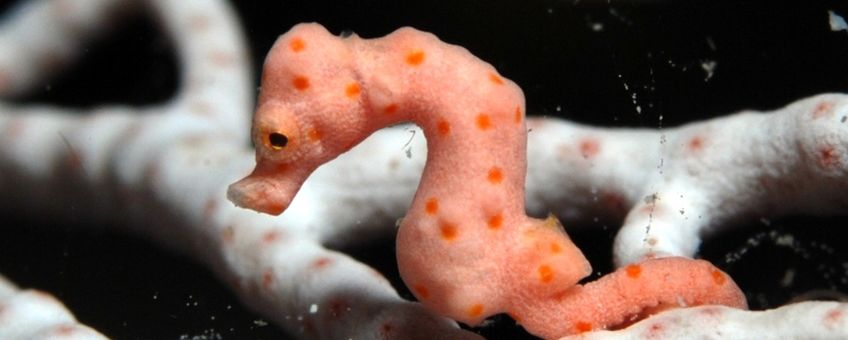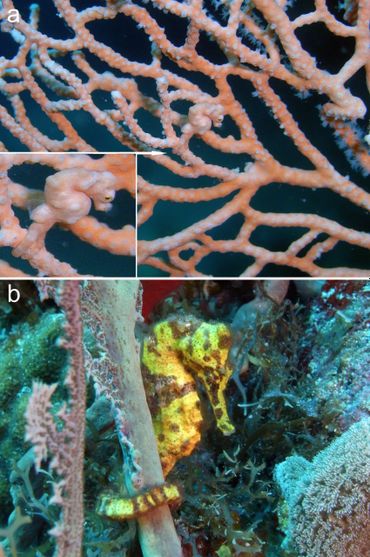
Mapping the sea horse trade: breeding is getting better and better
Naturalis Biodiversity CenterSeahorses are marine fishes that capture our imagination due to their appearance and reproductive behavior. Many fish lay eggs, but seahorses are viviparous, and the males carry the unborn seahorses with them. They have a special brood pouch for this, and so the father often has a strikingly large stomach.
Eastern markets
Seahorses mainly occur in shallow coastal waters. There are currently 48 known species, but new species are still being discovered. In the past twenty years, no less than 15 new species have been described, several of which are exceptionally small (less than two centimetres long) and have been placed in the category of so-called ‘pygmy seahorses’.
Seahorses worldwide are threatened with extinction as a result of their habitat being damaged. Due to their iconic appearance, they are also popular in international trade. For centuries, large numbers of dried seahorses have been traded as a raw material for traditional medicines in eastern markets.
Aquarium trade
 Two Hippocampus individuals clinging to gorgonian octocorals in their natural environment: (a) Hippocampus denise in the Raja Ampat Islands, West Papua, Indonesia (2006); (b) Hippocampus reidi on Sint Eustatius, Eastern Caribbean (2015) (Source: Bert Hoeksema)In recent years, 27 species have also become desirable in the international aquarium trade. Most seahorses live in warm water. Just like many other tropical sea animals, live seahorses can be brought from their natural habitat to the aquarium shop within two days. The smaller species are not traded. These are hard to find due to their camouflage and difficult to keep in captivity as they impose special requirements on the habitat. That is because they live in symbiosis with a specific coral species.
Two Hippocampus individuals clinging to gorgonian octocorals in their natural environment: (a) Hippocampus denise in the Raja Ampat Islands, West Papua, Indonesia (2006); (b) Hippocampus reidi on Sint Eustatius, Eastern Caribbean (2015) (Source: Bert Hoeksema)In recent years, 27 species have also become desirable in the international aquarium trade. Most seahorses live in warm water. Just like many other tropical sea animals, live seahorses can be brought from their natural habitat to the aquarium shop within two days. The smaller species are not traded. These are hard to find due to their camouflage and difficult to keep in captivity as they impose special requirements on the habitat. That is because they live in symbiosis with a specific coral species.
In a recent scientific article published in the journal Diversity, biology student Sasha Koning and Naturalis researcher Bert Hoeksema (also a professor at the University of Groningen) describe how the international trade in seahorses has developed during the past two decades. They used online databases for this study.
Unlike other aquarium fish species, seahorses are protected by CITES (Convention on International Trade in Endangered Species of Wild Fauna and Flora), as a result of which countries are required to state import and export data of threatened species in the international trade. They must also state whether the animals were captured in the wild or were cultured. These data reveal that the trade in wild seahorses has decreased strongly since 2004 when the species first became protected by CITES.
Wild animals for breeding
The trade in cultured animals initially increased and became larger than the number of captured seahorses, but it subsequently decreased again. It now concerns about ten thousand animals per year, which is less than the figure of almost ninety thousand in the peak year of 2008. Over the years, the methods and techniques for the culture of seahorses have improved, but this sector still faces many challenges, such as cost-effective production, nutrition, and diseases.
The culture of seahorses still predominantly depends on wild animals for breeding. Furthermore, it is important that fishermen from countries like Vietnam and Sri Lanka, who currently depend on the trade in seahorses, are encouraged to switch to a more sustainable form of seahorse trading.
Many aquarium fans have discovered that it is fun to breed seahorses themselves. However, the trade in dried seahorses continues, and the numbers of those are dozens of times higher than the number of live fish. It is clear that most species of seahorse need protection to prevent their extinction.
More information
Text: Sasha Koning, University of Groningen and Bert Hoeksema, Naturalis Biodiversity Center
Photos: Bert Hoeksema (lead photo: seahorse Hippocampus denise hiding between octocorals)
